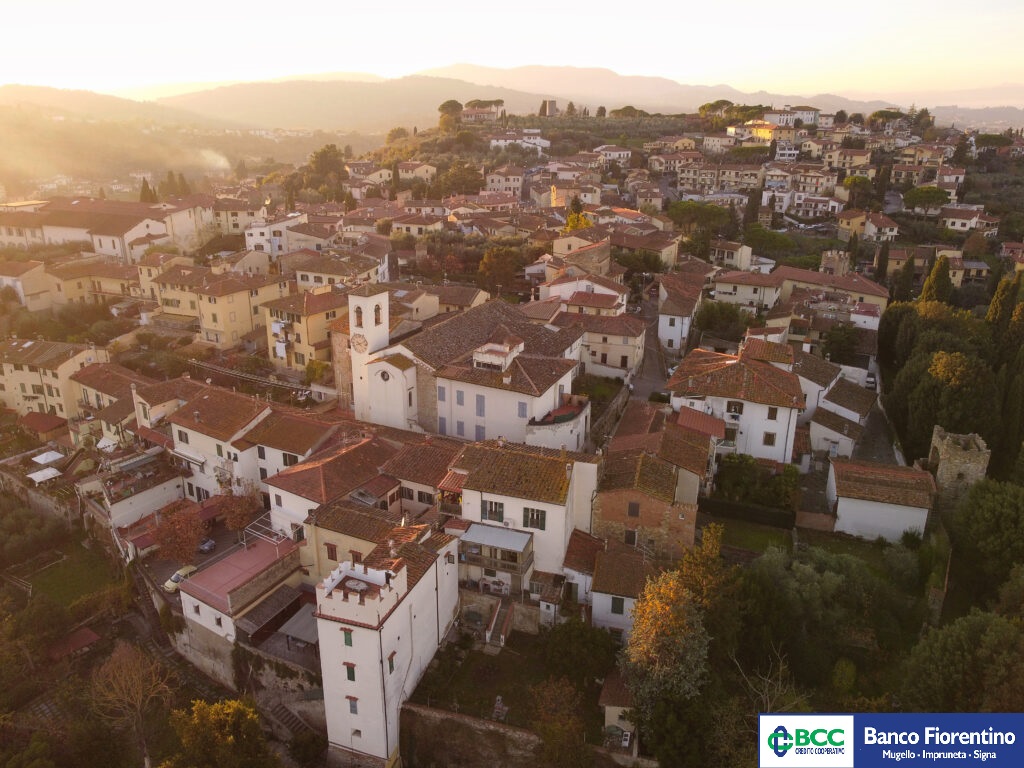
TURISMO
- TUTELIAMO FIRENZE E SIGNA INSIEME!
- COME ARRIVARE A SIGNA
- COME SPOSTARSI A SIGNA
- COSA VEDERE A SIGNA
- DOVE DORMIRE
- DOVE MANGIARE
- COSA VEDERE NEI DINTORNI DI SIGNA
- ITINERARI E PERCORSI
- RASSEGNA FOTOGRAFICA “FIERA DI SIGNA 2023”
Signa, una comunità immersa tra corsi d’acqua, laghi e campi coltivati, sembra emergere dall’antico bacino lacustre di Firenze come un’isola residuale di bellezze naturali ed artistiche, a testimonianza del suo ruolo nevralgico di crocevia svolto per secoli.
Sia l’Arno che il ponte che lo attraversa, insieme alla vicinanza con la città di Firenze, costituiscono infatti gli elementi principali intorno ai quali si è costruita l’identità della città. Non a caso nello stemma del Comune di Signa compaiono un fiume attraversato da un ponte: simboli incontestati delle vicende cittadine e dello spirito della popolazione signese, dedita al commercio, allo scambio e alla diffusione delle proprie tradizioni, gelosamente conservate e tramandate di generazione in generazione.
Signa, a chi getta uno sguardo attento al suo territorio, non offre infatti solo bellezze naturali, come i suoi numerosi laghi, tra cui emerge quello dei Renai, o le sue colline coltivate a oliveti e vigneti, ma regala anche un ricco repertorio di tradizioni ed usanze storiche e popolari, che ogni anno rivivono in feste, celebrazioni e cerimonie laiche e religiose.
La ricchezza di queste usanze e tradizioni è sicuramente da attribuire alle sue antiche origini. La sua nascita è da far risalire in epoca assai remota, probabilmente etrusca, anche se il primo documento ufficiale in cui si parla di Signa risale al 964, e riguarda la donazione della Pieve di Signa al Capitolo fiorentino da parte di Rambaldo, vescovo di Firenze.
Come già evidenziato, le sue vicende sono strettamente intrecciate a quelle fiorentine: la vicinanza al capoluogo toscano, inizialmente per motivi ecclesiastici e religiosi, in seguito per ragioni strategiche e commerciali, ha caratterizzato fin quasi ai nostri giorni la storia di Signa. A cominciare dagli scontri per il possesso del suo territorio tra la Badia e la potente città di Firenze negli anni Venti del 1200, con conseguente vittoria del comune fiorentino, alle vicende tra Guelfi e Ghibellini, al respingimento delle milizie viscontee nel 1397 (episodio che rivive ogni anno nella rievocazione della Fiera di Settembre), fino al ritorno dei Medici a Firenze, Signa è sempre stata al centro della vita economica e culturale della provincia fiorentina, mantenendo nei secoli autonomia amministrativa e statutaria – a testimonianza della sua importanza – fino alla riforma introdotta dal Granduca Pietro Leopoldo negli anna Settanta del XVIII secolo, quando Signa perse la sua indipendenza, venendo accorpata alla comunità di Campi. Del resto la soppressione dell’amministrazione signese non riuscì certo a cancellare il sentimento di forte identità sedimentato nell’animo dei suoi cittadini, ma servì anzi a rafforzarlo: ne è testimonianza la sua breve durata, dal 1774 fin solo al 1808, quando nella Toscana annessa all’impero napoleonico Signa tornò ad essere sede di un’amministrazione autonoma.
Le tracce di questa storia ricca di suggestioni e rimandi religiosi e politici, è tutta scolpita nella città di Signa, a cominciare dal suo Castello, fino alle Chiese e alle Pievi – S.Maria, San Lorenzo, San Giovanni – con i loro patrimoni artistici pittorici e architettonici, che in ogni stagione, in varie epoche dell’anno, tornano ad essere protagonisti nelle celebrazioni delle vicende storiche cittadine, regalando emozioni ad abitanti e turisti che, sempre più numerosi, si dirigono verso questa località poco distante dagli itinerari turistici classici della capitale fiorentina.
TURISM
- LET’S PROTECT FLORENCE AND SIGNA TOGETHER
- HOW TO GET TO SIGNA
- HOW TO GET AROUND SIGNA
- WHAT TO SEE IN SIGNA
- SLEEPING
- EATING
- WHAT TO SEE NEAR SIGNA
- TOURS AND ROUTES
- PHOTO REVIEW “FIERA DI SIGNA 2023”
Signa, a community immersed in waterways, lakes and cultivated fields, seems to emerge from the ancient lake basin of Florence as a residual island of natural and artistic beauty, testifying to its crucial role as a crossroads played for centuries. Both the Arno and the bridge that crosses it, together with the proximity to the city of Florence, constitute the main elements around which the city’s identity has been built. It is no coincidence that in the coat of arms of the Municipality of Signa a river crossed by a bridge appears: undisputed symbols of the city’s events and of the spirit of the Signa population, dedicated to trade, exchange and diffusion of their traditions, jealously preserved and handed down from generation to generation .
Signa, to those who take a careful look at its territory, does not in fact only offer natural beauty, such as its numerous lakes, among which that of Renai stands out, or its hills cultivated with olive groves and vineyards, but also offers a rich repertoire of traditions and historical and popular customs, which come to life every year in secular and religious festivals, celebrations and ceremonies. The richness of these customs and traditions can certainly be attributed to its ancient origins. Its birth can be traced back to a very remote era, probably Etruscan, even if the first official document mentioning Signa dates back to 964, and concerns the donation of the Pieve di Signa to the Florentine Chapter by Rambaldo, bishop of Florence . As already highlighted, its events are closely intertwined with those of Florence: the proximity to the Tuscan capital, initially for ecclesiastical and religious reasons, later for strategic and commercial reasons, has characterized the history of Signa almost up to the present day. Starting from the clashes for the possession of its territory between the Badia and the powerful city of Florence in the 1220s, with the consequent victory of the Florentine municipality, to the events between the Guelphs and Ghibellines, to the repulsion of the Visconti militias in 1397 (an episode which revives every year in the re-enactment of the September Fair), until the return of the Medici to Florence, Signa has always been at the center of the economic and cultural life of the Florentine province, maintaining administrative and statutory autonomy over the centuries – as evidence of its importance – until the reform introduced by the Grand Duke Pietro Leopoldo in the seventies of the 18th century, when Signa lost its independence, being merged into the community of Campi. Moreover, the suppression of the Signese administration certainly did not succeed in erasing the feeling of strong identity sedimented in the souls of its citizens, but rather served to strengthen it: its short duration, from 1774 until 1808, when in Tuscany annexed to the Napoleonic empire, Signa returned to being the seat of an autonomous administration. The traces of this history rich in religious and political suggestions and references are all engraved in the city of Signa, starting from its Castle, up to the Churches and Parish Churches – S.Maria, San Lorenzo, San Giovanni – with their artistic heritage pictorial and architectural, which in every season, at various times of the year, return to be protagonists in the celebrations of the city’s historical events, giving emotions to inhabitants and tourists who, increasingly numerous, head towards this location not far from the classic tourist itineraries of the Florentine capital.
